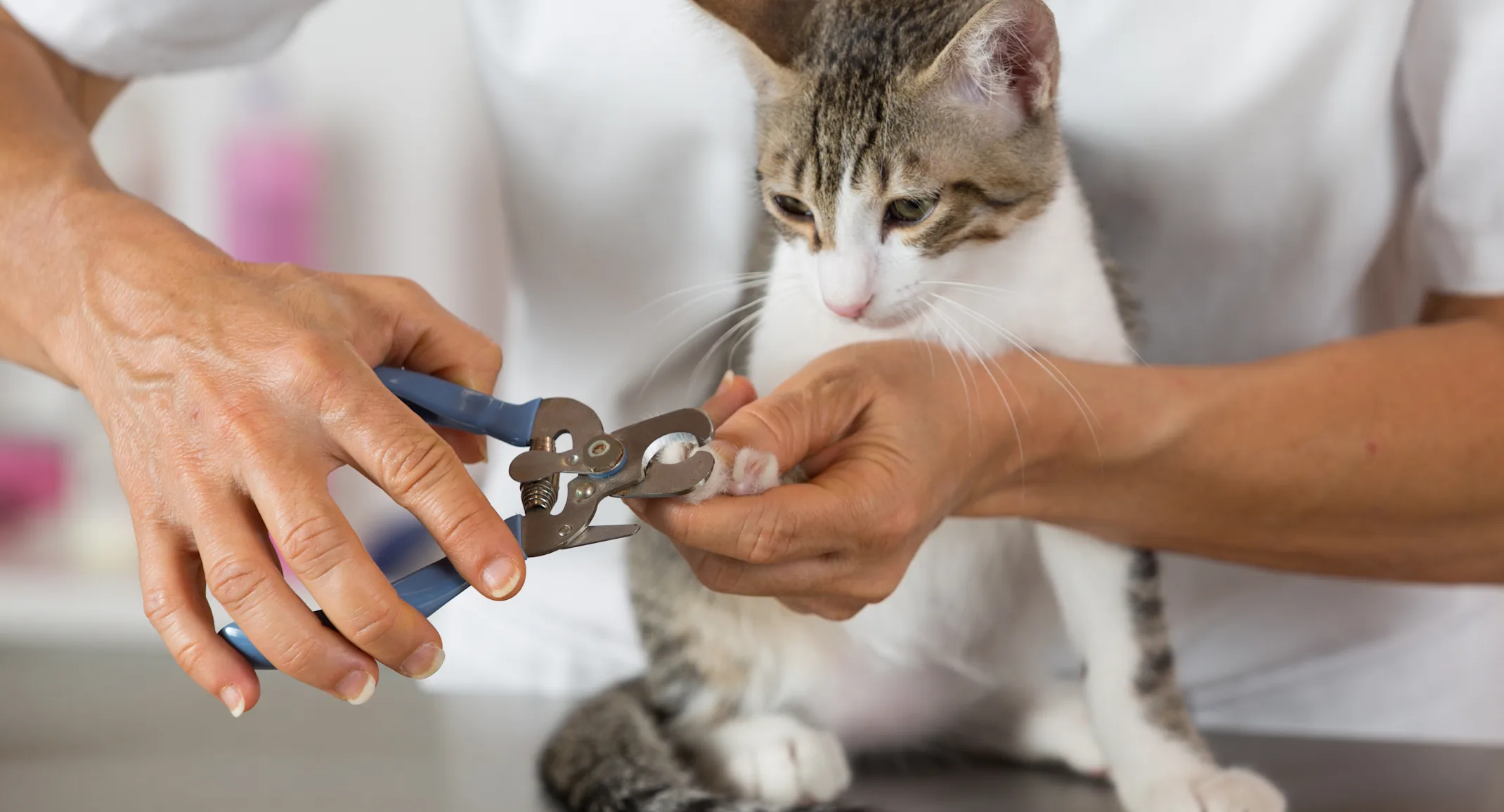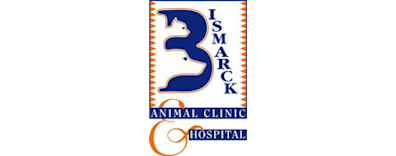Nail trimming is an important part of pet grooming. Adding nail trims to your pet’s grooming routine will help keep your pet comfortable and help prevent you from being injured by sharp nails. If your pet’s nails can be heard clicking against the floor as they walk, they are too long. Nails should be trimmed when they get close to touching the ground when the pet stands. Many dogs have dewclaws, nails located on the inner surface of the paw, that should be trimmed as well.
The nail grows out of the last bone in the toe and has two layers. There is a soft cuticle layer in the center of the nail that is called the quick; it surrounds the bone and extends down part of the nail. The quick contains blood vessels and nerves; it should be avoided when trimming the nail. The hard, outer covering of the nail surrounds the quick and is the part that needs to be trimmed. That covering can be dark or light-pigmented. Darkly pigmented nails are more difficult to trim than lightly pigments nails. In lightly pigmented nails, the quick can be seen from the side of the nail making it easier to avoid cutting the quick. It is still possible to cut a darkly pigmented nail; there are just some signs to watch for that indicate that the quick is close.
Trimming your pet’s nails prevents your flooring, furniture, and you from being scratched but it also helps with your pet’s safety and health. Long nails can get caught in carpet, on rocks, or on tree branches which makes walking difficult and falling easier, and the nails are more prone to breaking which can potentially cause injury. If a break occurs and exposes the quick, the part of the nail that has nerves and blood vessels, it can be quite painful and can lead to infection since the area is constantly exposed to dirt and bacteria from the ground. Dog’s use their nails for balance and traction; long nails can interfere with the placement of their feet on the ground. The long nails push the dogs toes up which cause the heel to come down for the pet to keep balance. Stress gets put on the foot as well as muscles and ligaments in the leg which can cause pain over time and potentially affect how the pet walks permanently. Overgrown nails will start to curl underneath the dog’s foot and embed in the paw pad over time especially dewclaws as they aren’t naturally worn down as the pet walks like the other nails.
As mentioned previously, it is best to have your pet’s nails trimmed when they get close to touching the ground; for most pets that is every 3-4 weeks. If your pet is active, it could be a longer period between trimmings as nails can be worn down naturally through friction with the ground. If your pet’s nails have been long for a while, the quick will have grown with the nail. To shorten the quick, the nail needs to be cut close to the quick every 1-2 weeks.
Many owners take their pet to the groomers to have their nails trimmed; some owners need to take their pet to the vet to get their nails trimmed if they are too fearful or scared. Other owners prefer to trim them at home. When trimming nails at home, it is best to make several smaller cuts to the nail to avoid cutting the quick. Before starting, you can try looking on the underside of the nail. Sometimes the nail will show a curved line where the nail becomes fleshy; that is where the quick starts so it’s safe to cut off the portion of the nail before it. For black nails, cut small sections at a time until a central white area appears; that means that you are getting close to the quick. Once a black dot in the center of the nail appears, stop trimming as you have reached the max amount you can trim without cutting the quick. The hardness of the center of the nail changes too as you get close to the quick. If you put your fingernail in the middle of the pet’s nail and it is spongey, you are close to the quick. At this point, it is best to round off the edges of the nail as they can get sharp and move on to the next nail.
There are several types of trimmers to choose from if you wanted to trim your pet’s nails on your own. A scissor trimmer looks like a pair of regular scissors except the blades have round indentations where the nail is lined up to trim. It is not made to cut through heavier nails and is not as sharp as some other options so it’s best to use it on cats or small dogs. A guillotine trimmer has an oval-shaped ring that the nail is inserted into then the blade cuts from the underside of the nail. Guillotine trimmers are best used on cats or dogs with thin nails. It may be harder to see the nail once it is in the trimmer so extra caution is needed until you have enough experience to know where your pet’s quick is. A safety nail trimmer is a plier style trimmer that can be used for cats and dogs. It comes in different sizes and has a safety guard that sits behind the blade to prevent cutting too much nail at once. A similar option is a heavy-duty nail trimmer. It is also a plier style and looks almost the same as the safety trimmer except it doesn’t have the guard and the blade edges are sharper. An electric trimmer, or nail grinder, is another option. A small part of the nail is grinded at a time and the edges can be smoothed out. This method is less likely to cause damage to the quick but the sound and vibration can be scary to pets. No matter which trimmer you chose, it’s always a good idea to have styptic powder or flour/corn starch on hand. These substances stop bleeding if the quick is accidentally hit.
It is recommended to keep your pet’s nails short to prevent injury to your pet and yourself. The safest length to keep your pet’s nails is just above the ground. Groomers and vet clinics can trim pet’s nails but if you prefer to trim them yourself, there are several types of nail trimming devices to choose from; find the one that works best for you and your pet. Feel free to call the clinic to ask advice on trimming your pet’s nails or to schedule an appointment with a technician to be shown how.
Miranda, CSR
Sources:
http://mountainviewvet.net/wp-content/uploads/2013/12/TRIMMING-YOUR-PETS-NAILS-AT-HOME-Mtn-View.pdf
https://vetmed.wsu.edu/outreach/Pet-Health-Topics/categories/procedures/dogs/clipping-your-dog’s-claws

